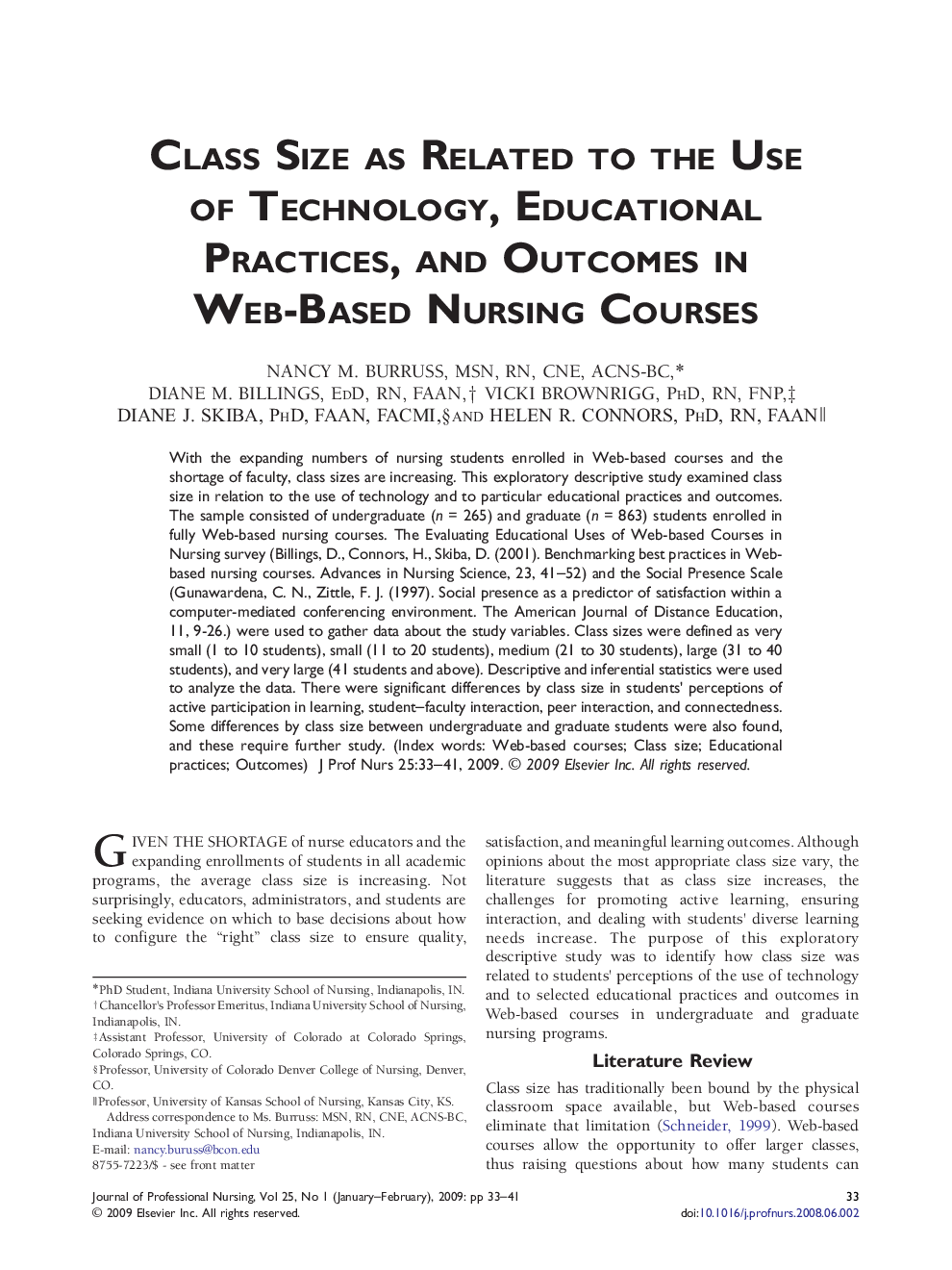| Article ID | Journal | Published Year | Pages | File Type |
|---|---|---|---|---|
| 2669526 | Journal of Professional Nursing | 2009 | 9 Pages |
With the expanding numbers of nursing students enrolled in Web-based courses and the shortage of faculty, class sizes are increasing. This exploratory descriptive study examined class size in relation to the use of technology and to particular educational practices and outcomes. The sample consisted of undergraduate (n = 265) and graduate (n = 863) students enrolled in fully Web-based nursing courses. The Evaluating Educational Uses of Web-based Courses in Nursing survey (Billings, D., Connors, H., Skiba, D. (2001). Benchmarking best practices in Web-based nursing courses. Advances in Nursing Science, 23, 41--52) and the Social Presence Scale (Gunawardena, C. N., Zittle, F. J. (1997). Social presence as a predictor of satisfaction within a computer-mediated conferencing environment. The American Journal of Distance Education, 11, 9-26.) were used to gather data about the study variables. Class sizes were defined as very small (1 to 10 students), small (11 to 20 students), medium (21 to 30 students), large (31 to 40 students), and very large (41 students and above). Descriptive and inferential statistics were used to analyze the data. There were significant differences by class size in students' perceptions of active participation in learning, student–faculty interaction, peer interaction, and connectedness. Some differences by class size between undergraduate and graduate students were also found, and these require further study.
